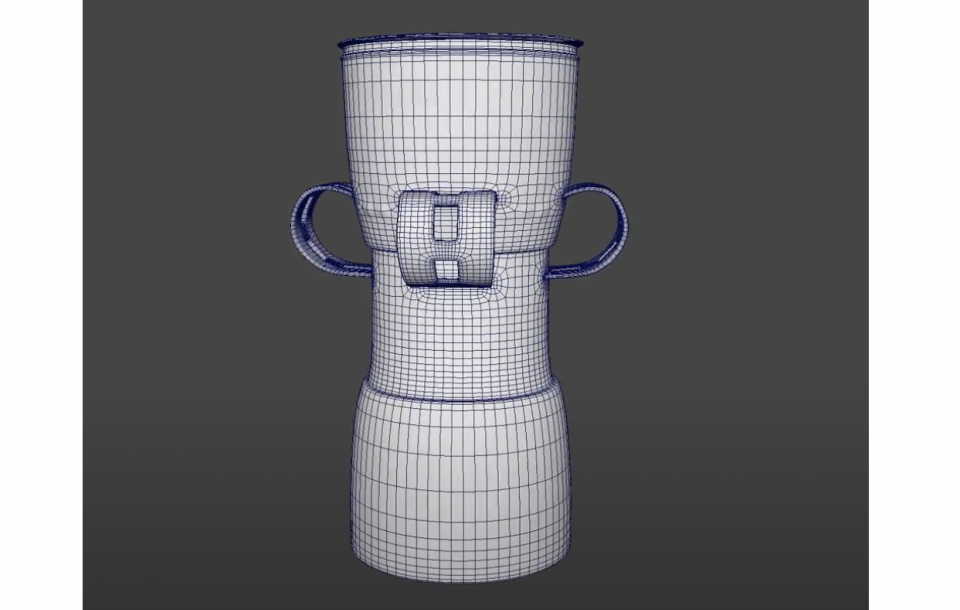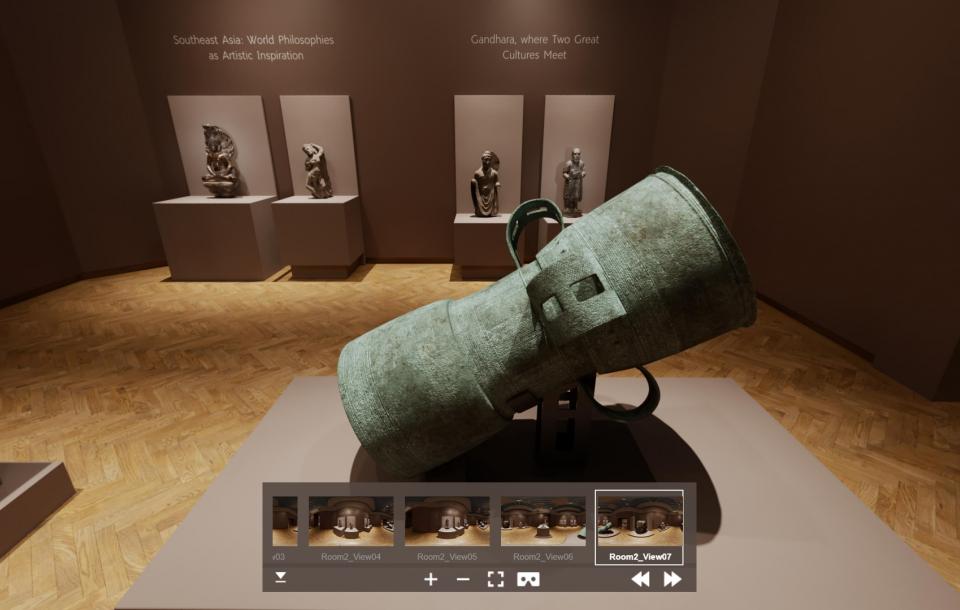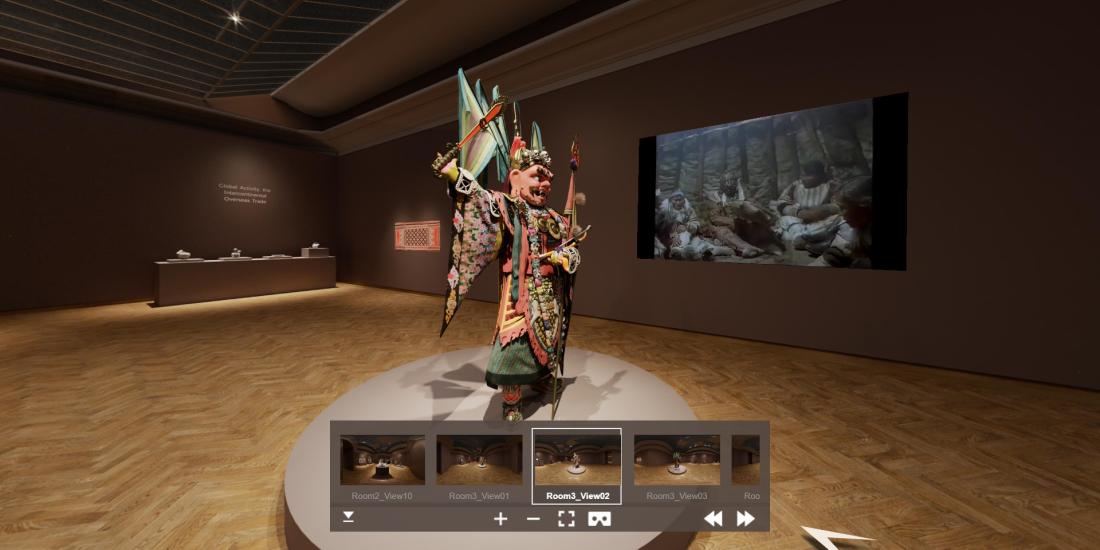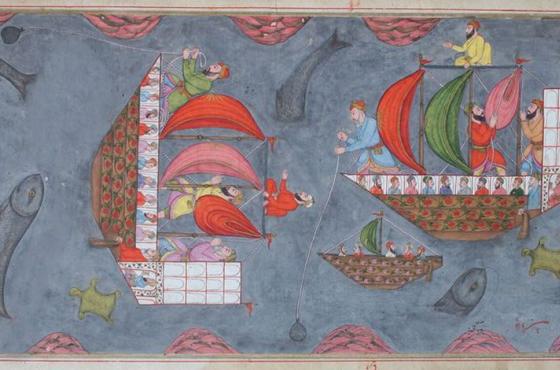Highly detailed drawings
In the time of coronavirus, travel is limited for works of art just as it is for us. The 18 artefacts could not therefore be brought together just like that. They can be found in collections spread across the globe. Travelling to them all to study and document everything in detail would therefore have cost a lot of money. So all that Lunaus had to work with were the exhibition catalogues from 2010 with photos and dimensions, plus photos and videos of the exhibition itself held at Bozar. They very quickly enlisted the help of an archaeological drawer, Camille Lemoine. On the basis of this available image material, she made highly detailed drawings of the artefacts on paper. Note that sometimes Camille has to spend as much as 15 hours on a single drawing. Eventually, Lunaus obtained a complete picture of the minute details and structures of the 18 objects. Time for stage two.

From the drawing to 3D
Whereas the drawings give an image of the details, the photos provide insight into the structure. Lunaus combined these two strengths to give shape to the 3D object and to model it. Using the dimensions in the catalogue they gradually arrived at an end result. But then came the most difficult step: representing to perfection the texture and condition of the materials. The ultimate goal? To obtain an image that matches the reality. And this reality sometimes has its imperfections. The 3D-image of the Shaman for example – which you can see at the top of this article – was originally far too perfect. The very smallest scratches also had to be captured and his clothes were also given a more 'worn' look. The works of art were now ready to travel to the exhibition rooms.

The final touch
After the objects are drawn and modelled, there is the final step that makes the whole an online experience. Lunaus next modelled the rooms in 3D and placed the 18 objects of A Passage to Asia in 3D in a specially-designed backdrop. Careful attention was paid to achieving precisely the right lighting to create the necessary shadows. Creating a virtual atmosphere entails a lot of trial and error until you manage to achieve the same atmosphere in all the rooms that will blend harmoniously into the whole. Finally, extra information was added. By clicking on the icons you learn more via audio, video, text or photos. You can also click on the objects themselves or on the titles. You can walk through the exhibition in 360° and stop to look more closely at any work of art that grabs your particular attention. Read, look and listen where and when you want, all at your own speed.

The virtual gains momentum
At our home offices we have all become budding technology experts. Our contacts with friends and our free time are now also increasingly moving to the virtual world. Today it is perfectly possible for everyone to visit an exhibition - and without an alarm going off every time you get too close to a work of art. You can discover every slightest detail or any otherwise invisible imperfection. What’s more, all the exhibitions are preserved for the future to never be forgotten. Due to coronavirus, the concept of the virtual exhibition has gained significant momentum, having already been around for a while. The ideal opportunity for Bozar to put the concept to optimal use in these strange times.
Want to know how to navigate through the result of all of this with just one click of the mouse? All is revealed here.
Lunaus has in the past made a lot of 3D-scans of our exhibitions that you can still visit virtually on this page!

